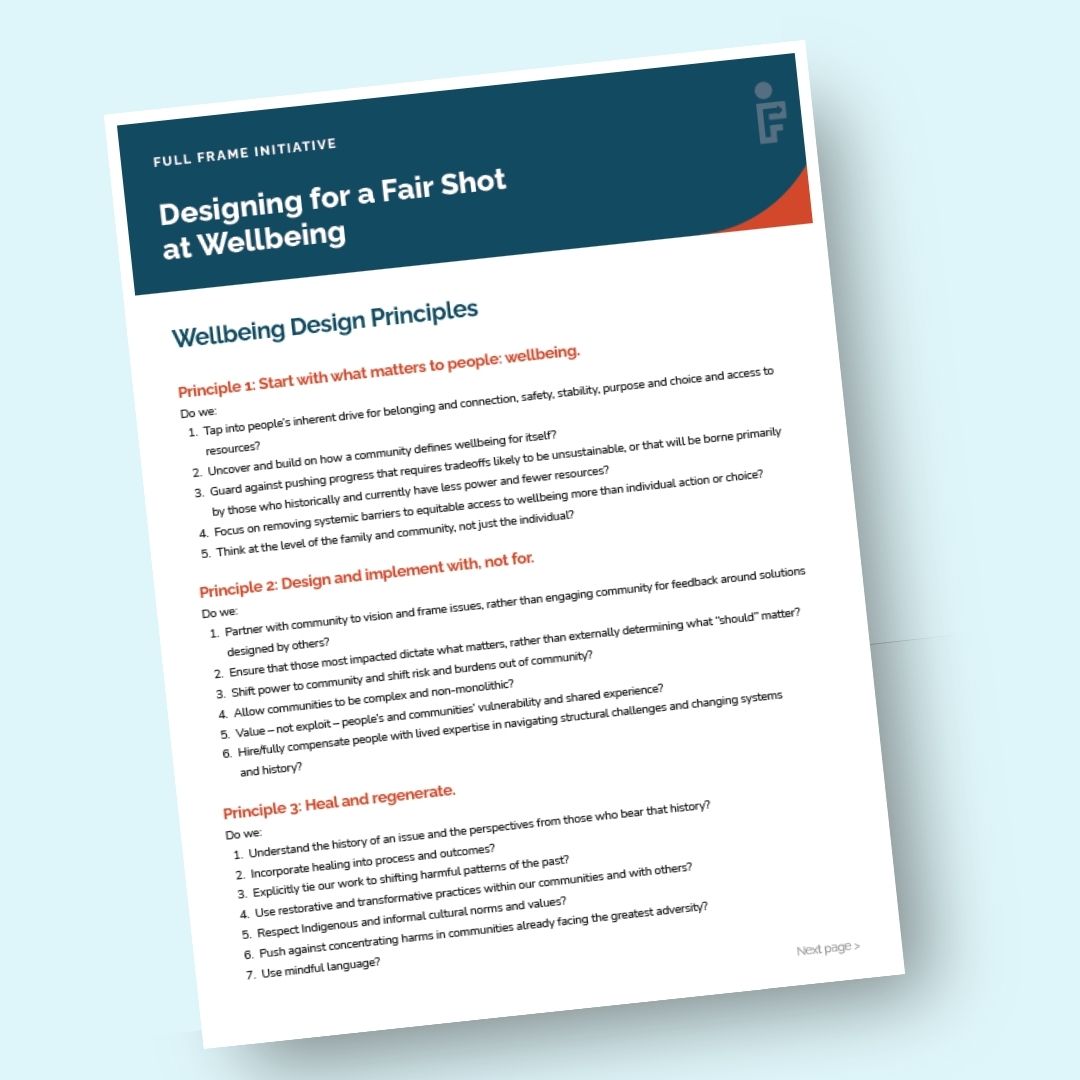
How can we ensure that everyone has a fair shot at wellbeing? Utilize our Wellbeing Design Principles to turn the wellbeing framework into action.
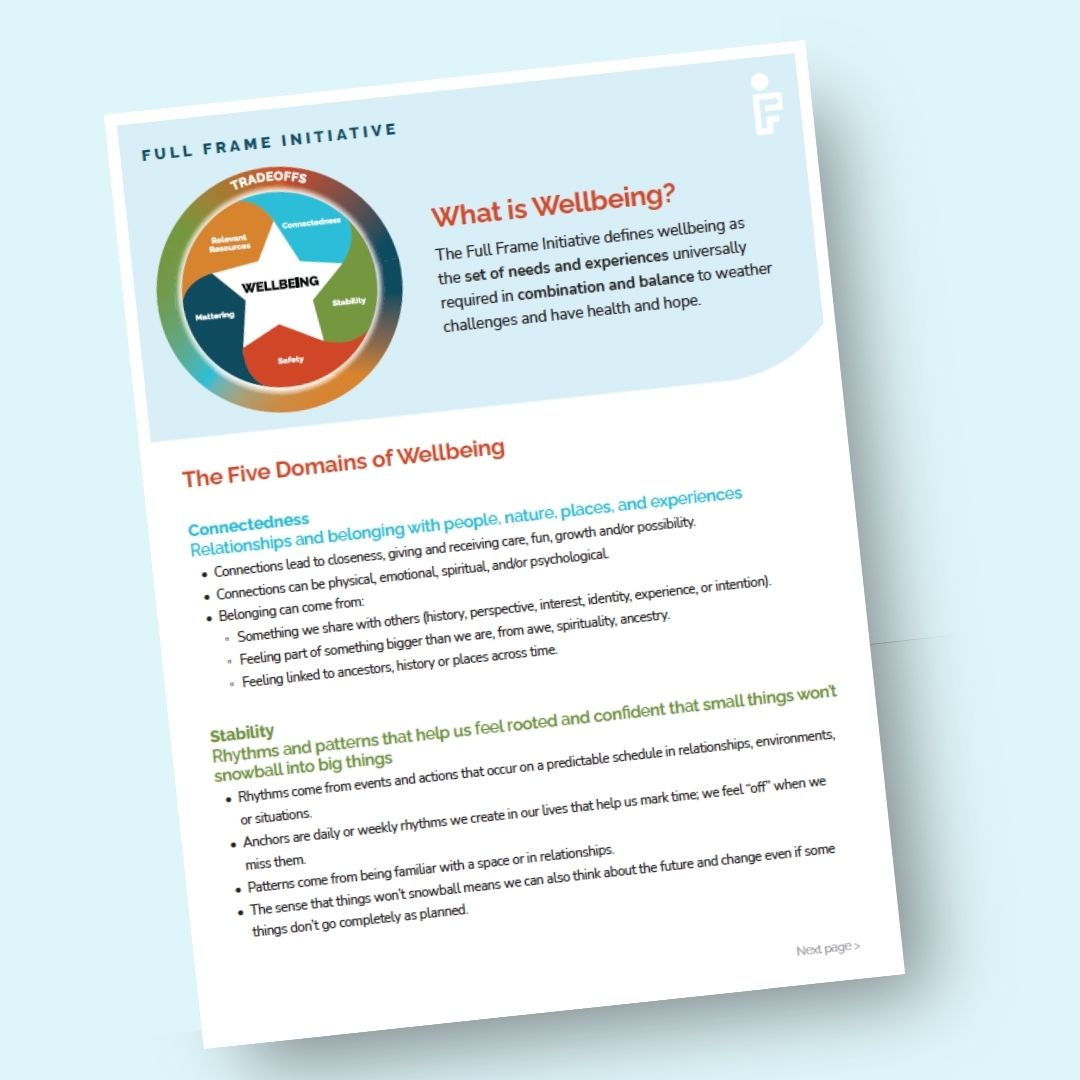
The Full Frame Initiative defines wellbeing as the set of needs and experiences universally required in combination and balance to weather challenges and have health and hope.
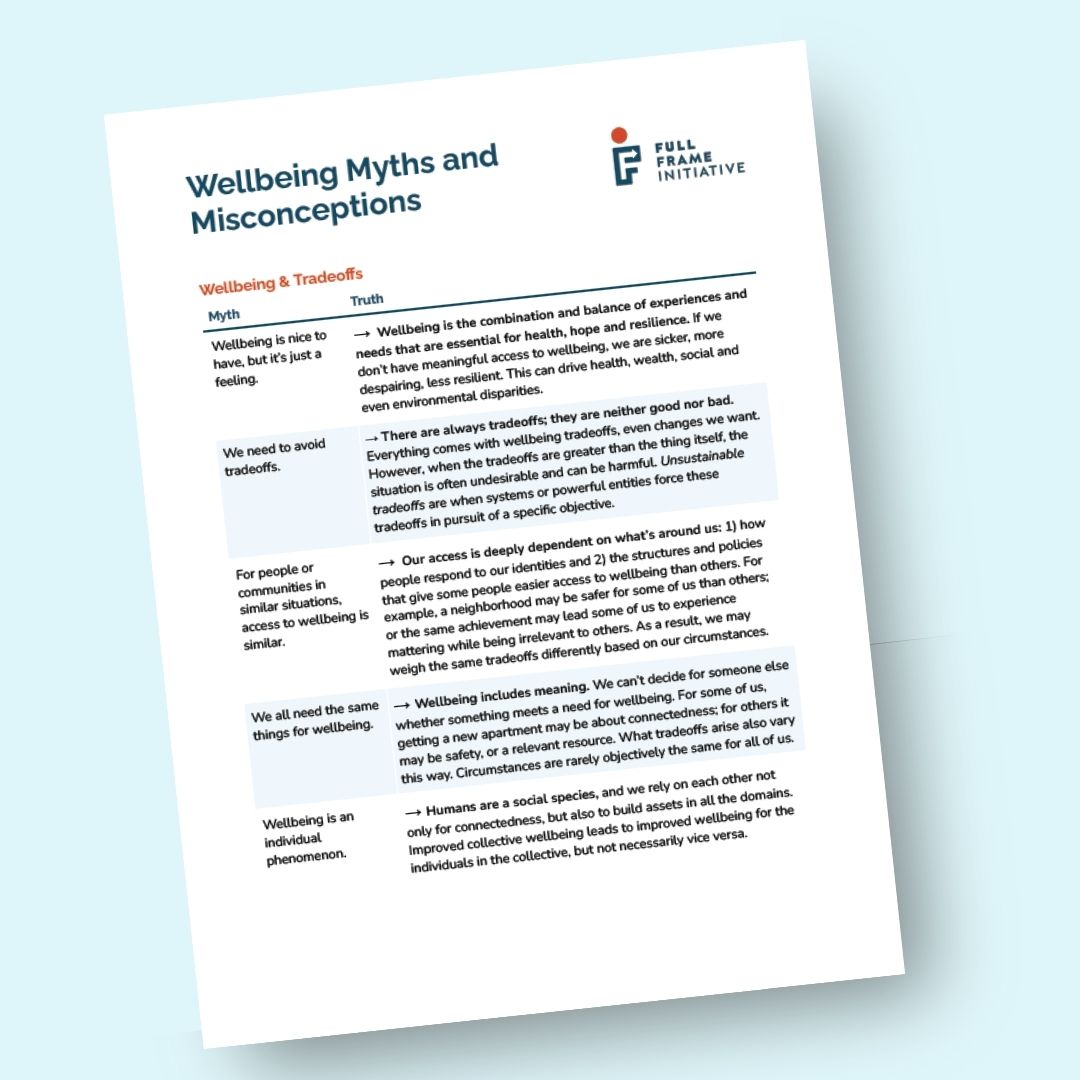
Wellbeing isn't just a "nice to have." In this resource, we break down the myths and misconceptions about wellbeing and tradeoffs.

Policymakers, funders and organizations focus on survivors' safety to evaluate the effectiveness of domestic violence programs. We asked survivors how they define success and found a different answer.
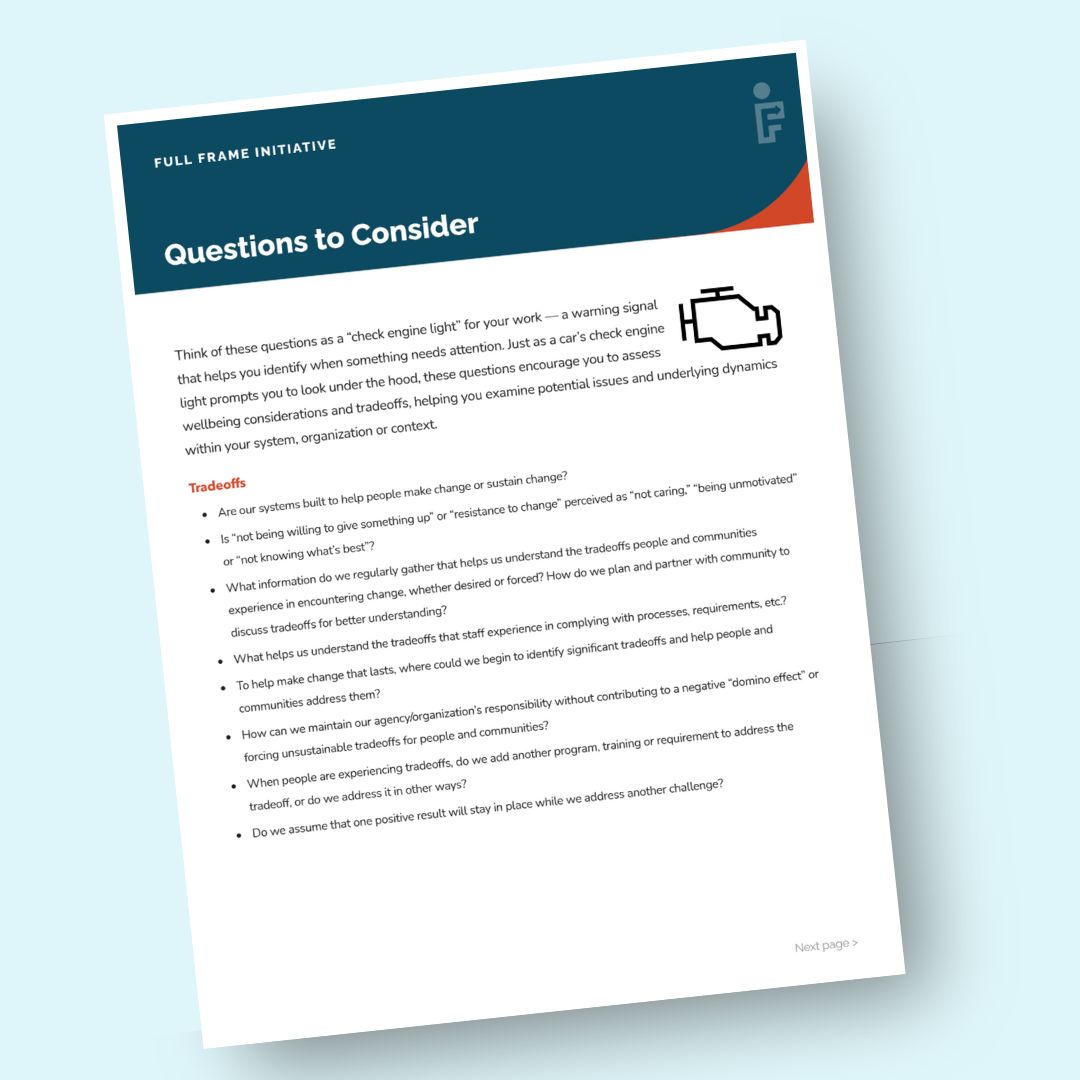
This tool offers a set of questions related to tradeoffs and the Five Domains of Wellbeing that you can use as a “check engine light” for you and your work.
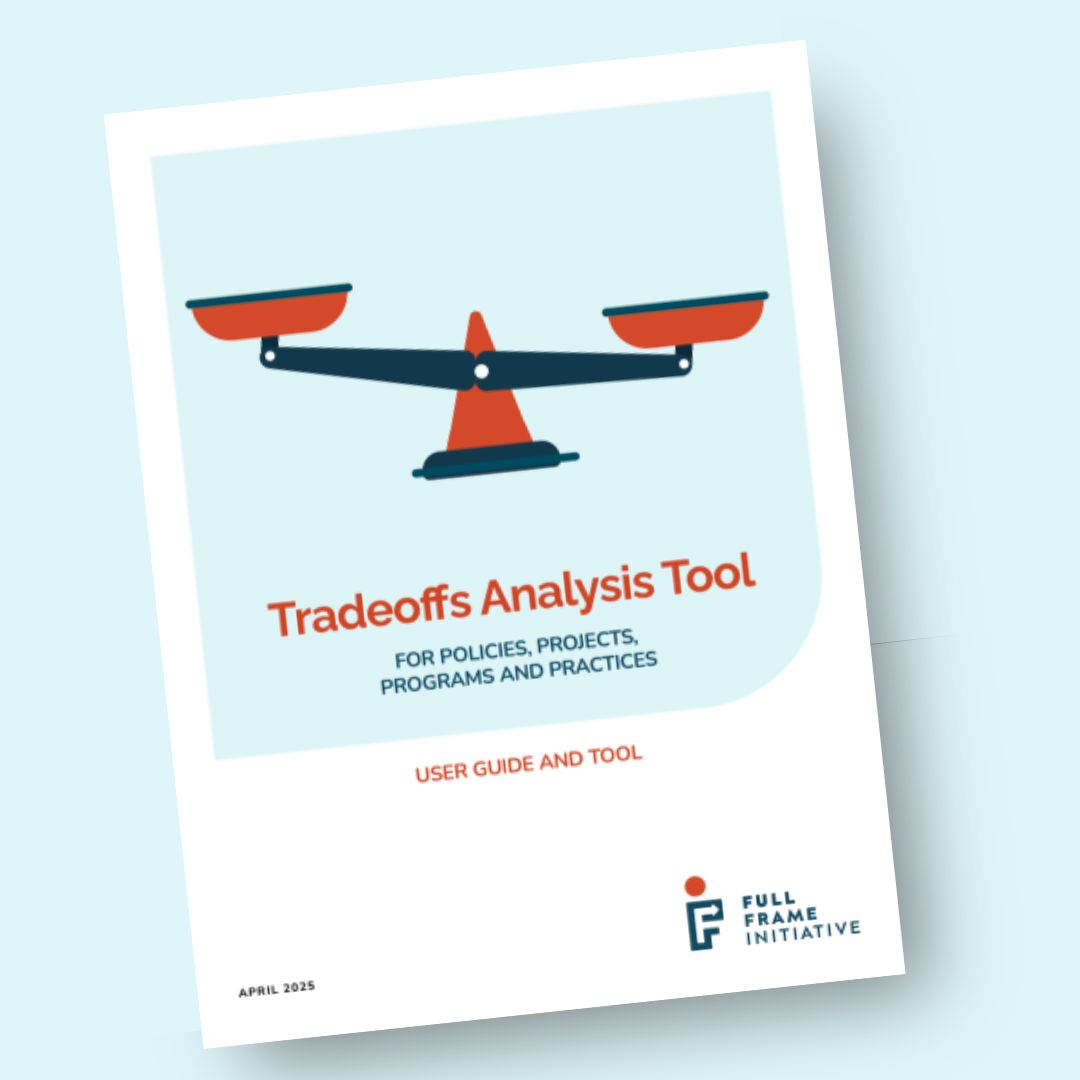
Use this tool to identify how a specific policy, project, program or practice will impact different stakeholders’ wellbeing, allowing you to anticipate and address unsustainable tradeoffs.
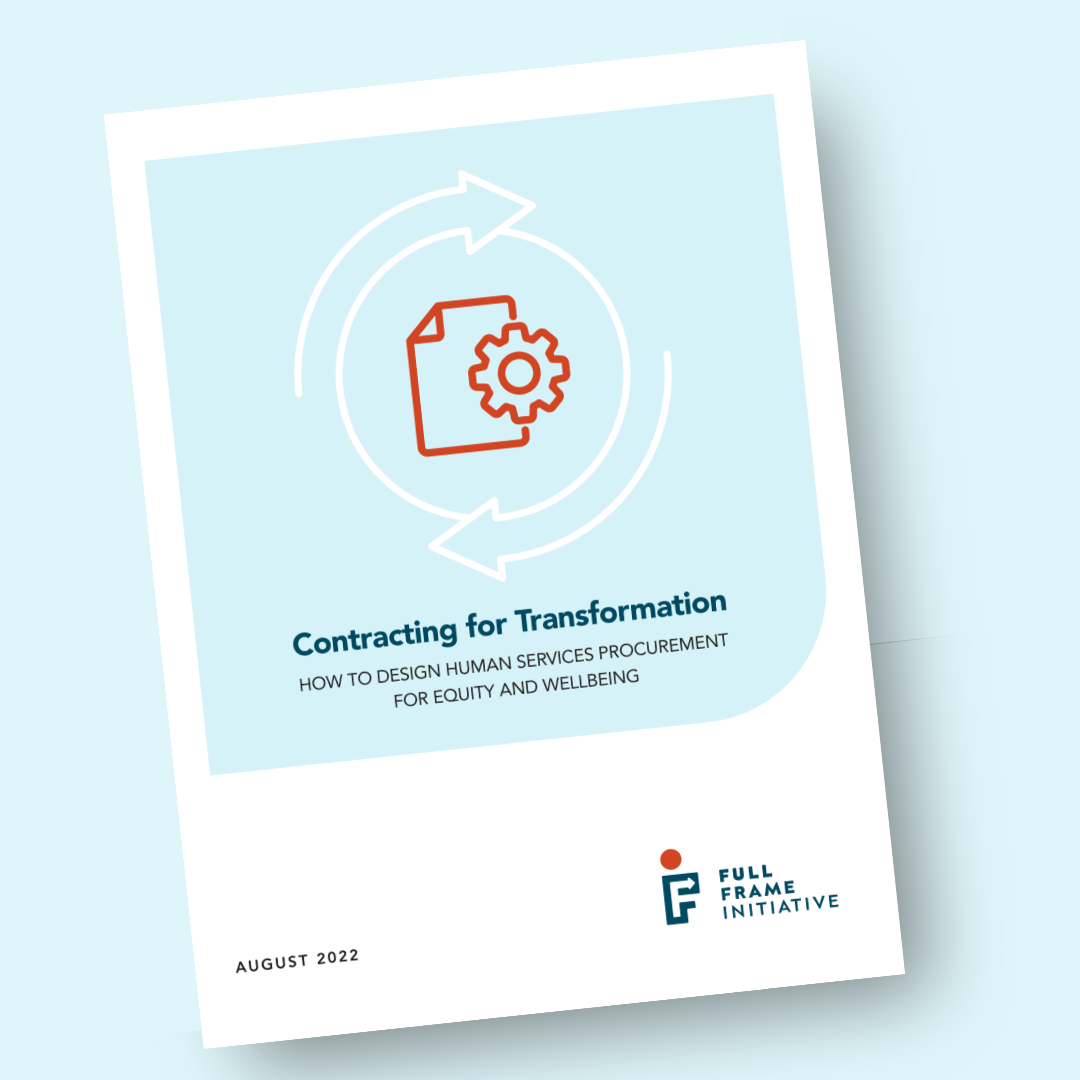
Our toolkit provides guidance for making procurement processes more equitable, and tangible tools for practical use such as score guides and questions for bidders.

Full Frame Initiative partnered with community leaders to develop the Community Bill of Rights. This resource serves as a guide for government systems, philanthropy and nonprofits to center community, shift power and heal systemic harms.

How effectively is your organization centering community? Use this tool with the Community Bill of Rights to guide conversations around what is or isn't being done to center community in your organization.

Learn how domestic violence practitioners can shift from a singular focus on short-term safety toward increasing survivor safety in the context of creating opportunities to support long-term wellbeing.
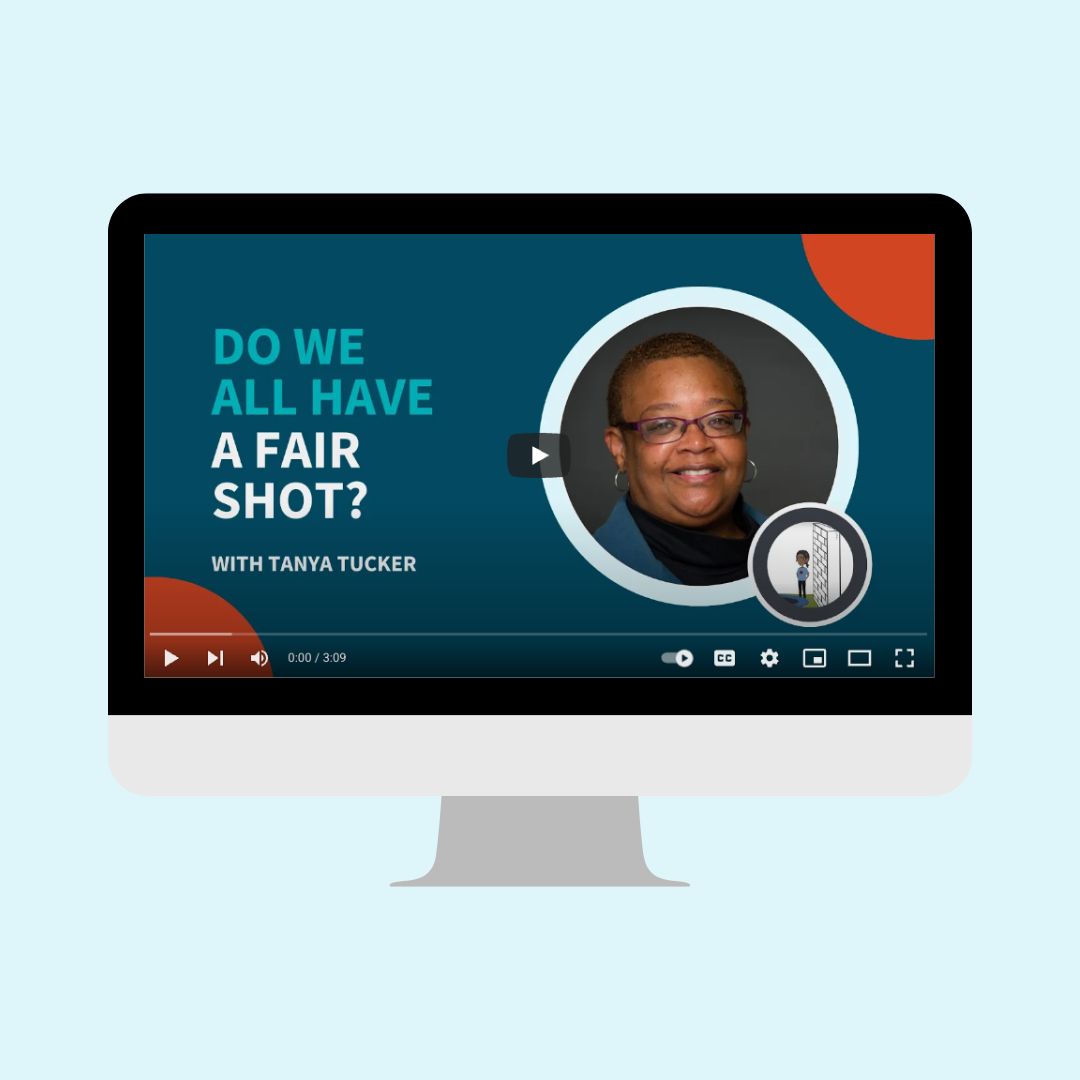
The U.S. should be a country where everyone has a fair shot at opportunity, and to thrive. But let's be real: that's not the case. Watch this video to learn why — and how we can change it.
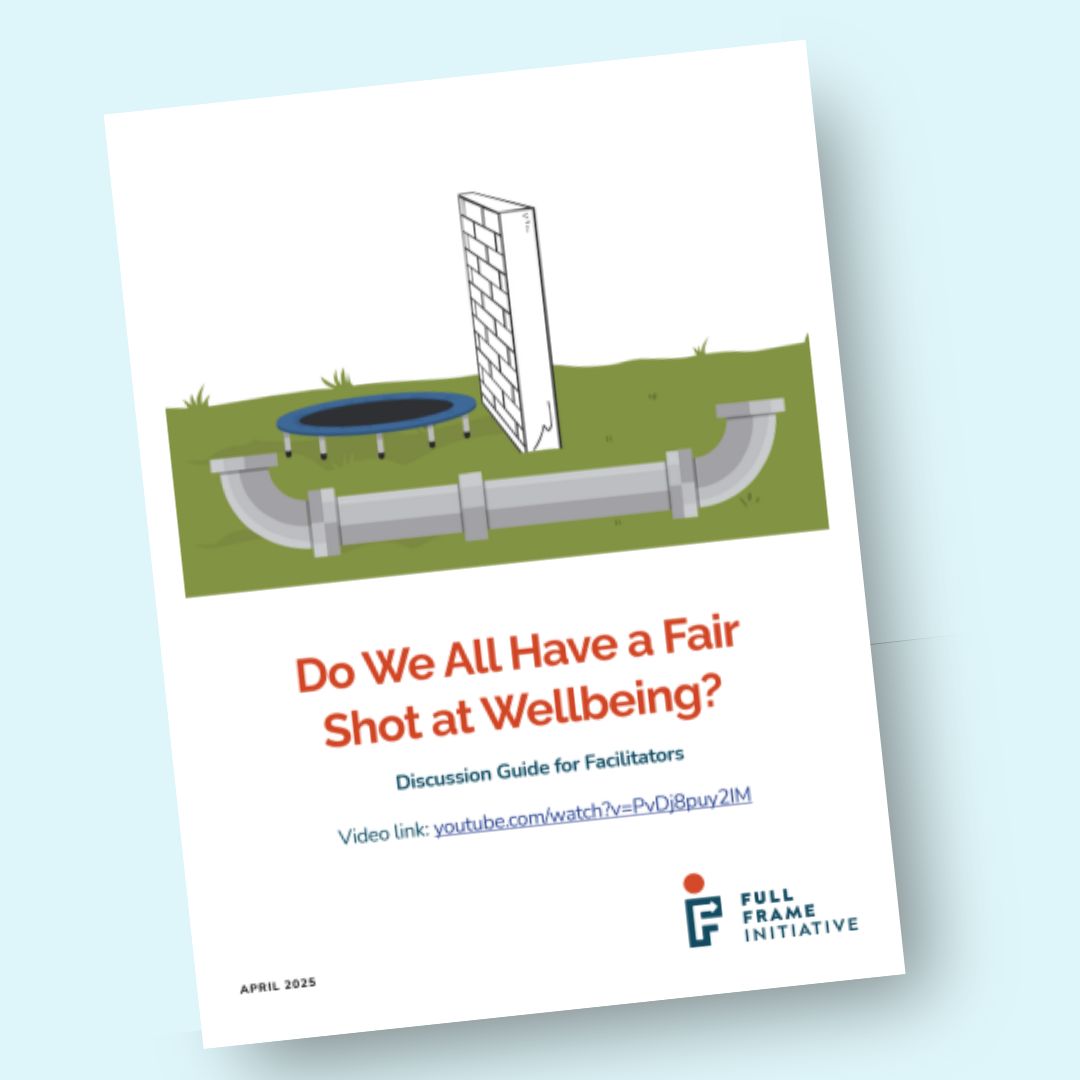
This discussion guide accompanies the video of the same name that introduces a powerful visual analogy for the systems that lead to unequal access to wellbeing.